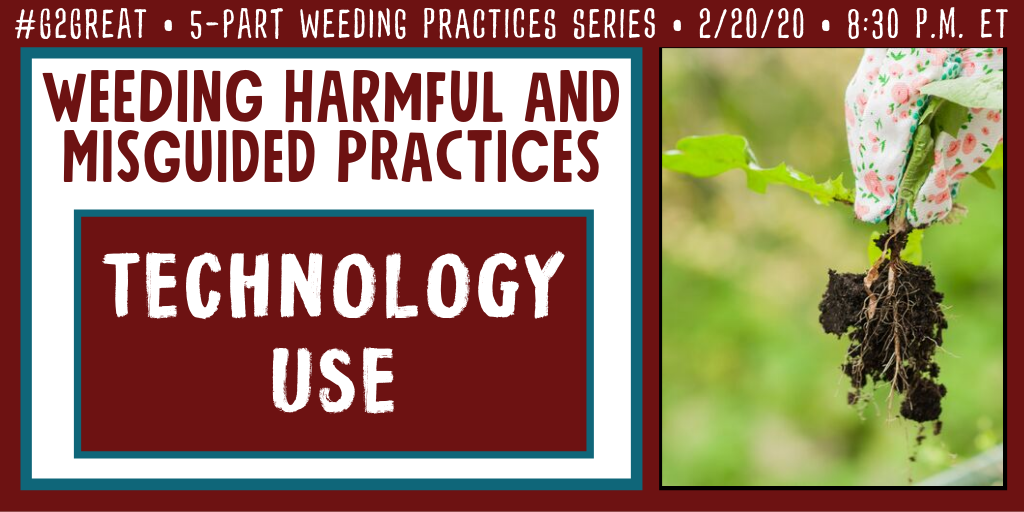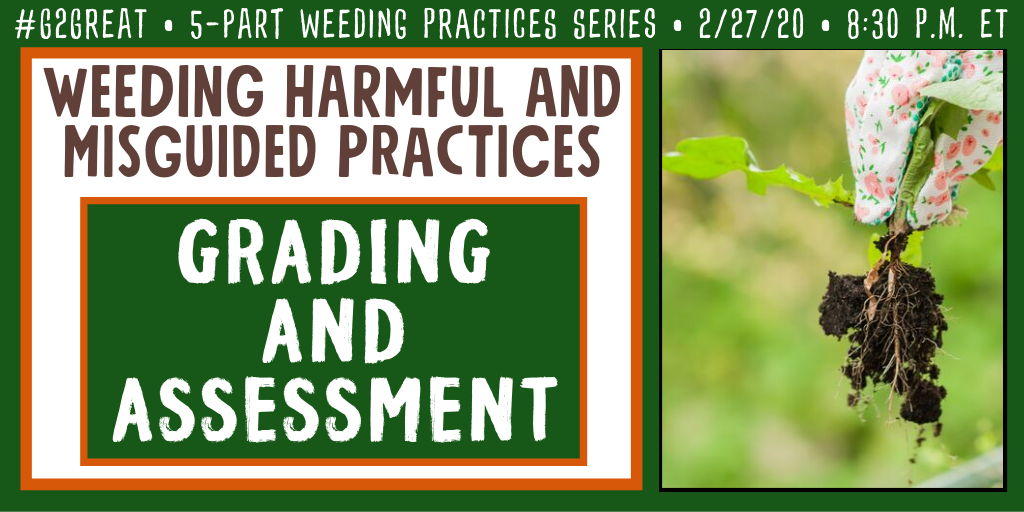by Mary Howard
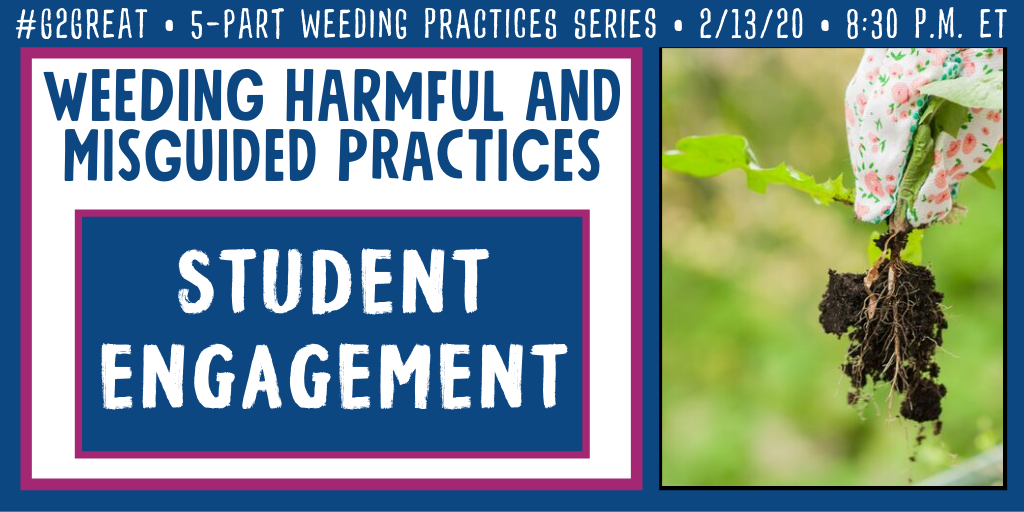
On 2/13/20, #G2Great continued our five-part series: Weeding Harmful and Misguided Practices. Two previous posts in our series included Access to Books on 1/30/20 and Behavior Management on 2/6/20. I am so grateful for this series topic as I am convinced that engagement is a hefty contributor to make-or-break learning. The attention we place on ensuring cognitive and emotional engagement can either elevate the learning process or leave it wandering aimlessly along a dead-end street to nowhere. In order to alter this dead-end trajectory, we must first consider the harmful and misguided practices that warrant weeding in order to focus our attention on essential engagement success features.
In her incredible book, Engaging Children: Igniting a Drive for Deep Learning, Ellin Keene illustrates this mismatch in priorities by posing two questions:
Have we become so overwhelmed by what we teach—checking off one standard after another—that we have forgotten that engaged students are much more likely to retain and reapply that content? Do we believe that students can learn to fall into the state of awareness, focus, intensity, and joy that we value so much for ourselves?
We celebrated Ellin’s book on #G2great 5/31/18 and her wise words below illustrate the heightened level of engagement we desire for ourselves and our children:

But this blissful state of wide-awakeness will never happen by chance. We cannot merely wish upon an engaged learning star and expect blind faith to take over. Student engagement happens if we apply thoughtful conditions Ellin describes so eloquently in her book. But in honor of our series theme, we are also committed to contemplating harmful and misguided practices that warrant “weeding” so that we can invest the time and energy we need on the practices that are most likely to fuel that blissful state and thus bring engagement to life in practice rather than simply in theory.
In this post, I will briefly suggest of the few weed worthy harmful and misguided practices and then explore those practices that can maximize our efforts so that we can reclaim our responsibility for engagement. While no practice comes with an engagement guarantee, thoughtful choices can dramatically increase the potential that student engagement is the reality from both sides – that of the teacher and the learner.
Let’s begin by looking at some harmful and misguided practices worth weeding followed by some #G2great tweets in honor of this goal:
Seven Harmful and Misguided Practices that Warrant Weeding
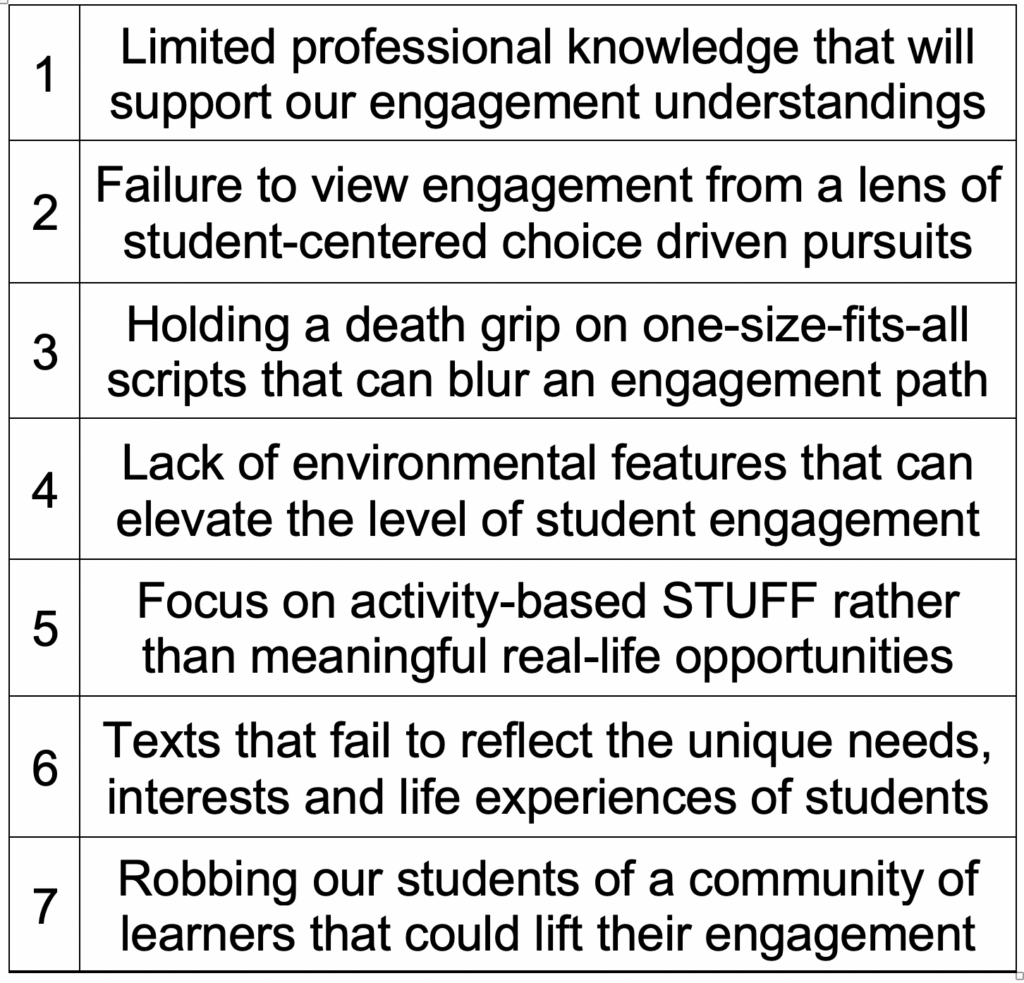
Below I have selected some #G2great tweets that are framed under Fran McVeigh’s question slide tweet. These offer a chat centered view of what may need weeding:

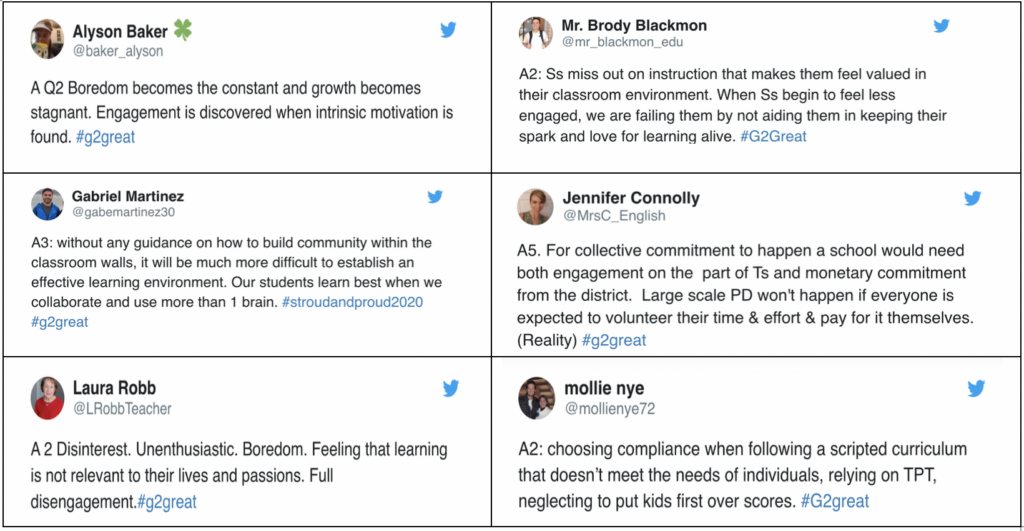
Now that we have considered some of the practices that are worth weeding, let’s turn our attention to those that are designed to support and enhance engagement. It’s relevant to this discussion to emphasize that both ways of seeing engagement are needed since alleviating won’t necessarily translate to elevating. Without exploring what we don’t want to do as well as what we do, we may inadvertently set up an immoveable roadblock to engagement. While there are many things to consider, I’d like to add seven practices that can enrich student engagement.
Seven Practices that Can Enrich and Elevate Student Engagement
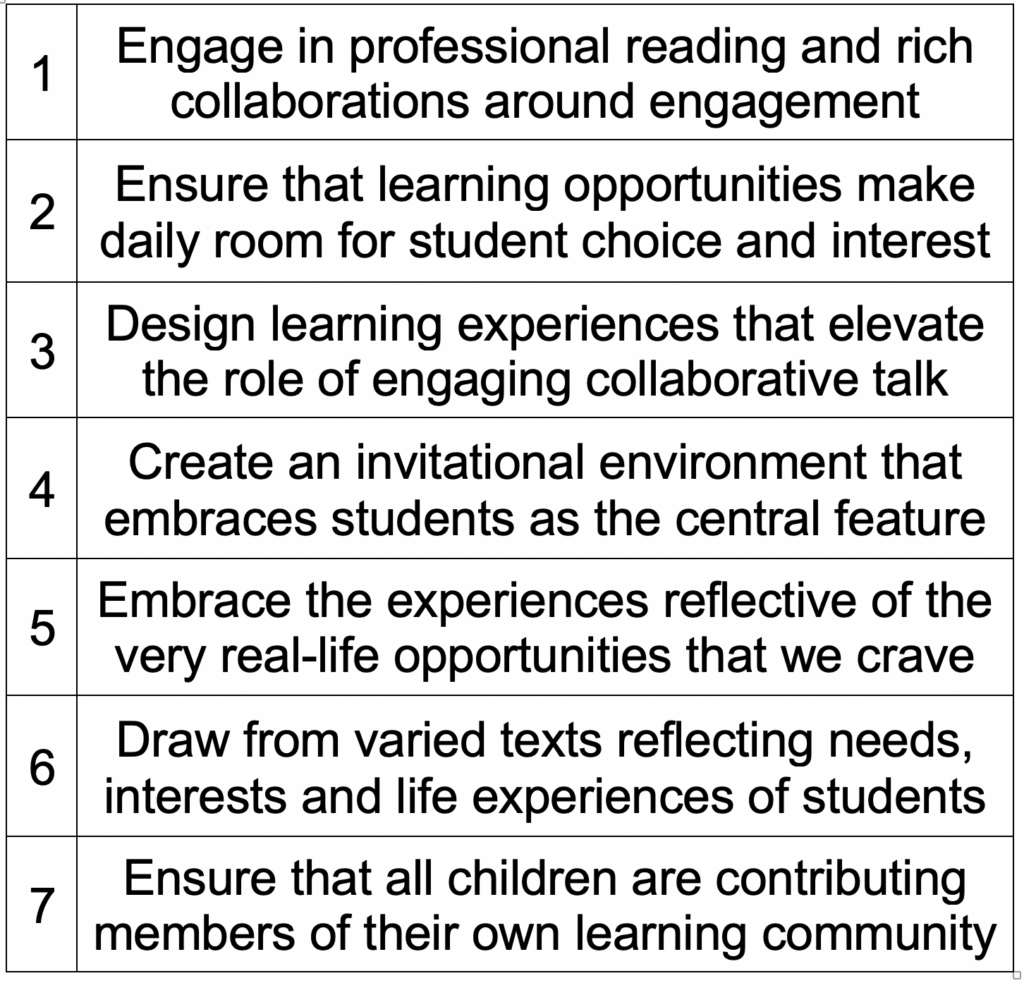
Once again, I’ll share some #G2Great tweets that extend these practices:

I decided to highlight two tweets in this section that feel like the bookends of student engagement with key features that we need to consider.

Mandy reminds us that we cannot hope to make these important shifts to balance the scales in favor of engagement unless we take the time to assess our students at all stages of the learning process across the day. This helps us to identify factors most likely to impact engagement as supported by our assessment evidence. In this way, assessment connected to in-the-moment observations and analysis becomes action research that allows us to make the best possible decisions toward this end. Mandy’s lovely reminder that assessment can “shine a light on student thinking like a flashlight” seems so relevant to this discussion.

I close with Barb’s tweet because children and their level of engagement in daily learning is our most critical consideration. As Barb reminds us, this does not mean that engagement is what we offer some children, often those who are already connected to the learning or who have had past positive experiences that increase the likelihood of engagement. Rather, we ensure that ALL children are engaged in learning including those who bring their own challenges and past negative experiences to the learning process that can make engagement more complex and require our focused attention.
Since I opened my blog post reflection with words of wisdom from Ellin Keene, it seems appropriate to close with her words:
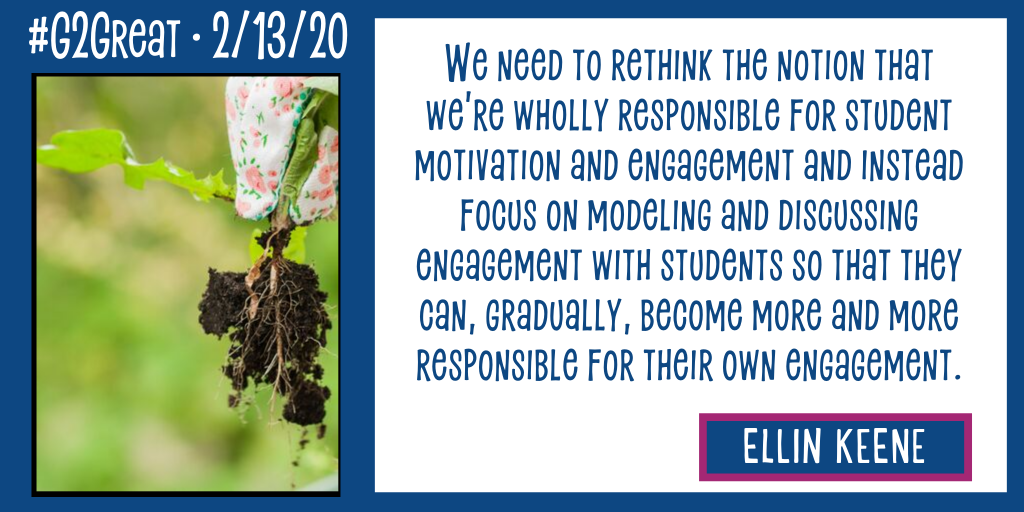
Opportunities for our students to “become more and more responsible for their own engagement” is the intent of our #G2Great Weeding Harmful and Misguided Practices series. To fully recognize the potential positive impact of each of our topics, we must alleviate practices that set us up for potential negative impact of those topics. This duo purpose allows teachers to focus on practices such as modeling, discussing and those I shared above that will transfer responsibility to students. It is impossible to elevate engagement until we get rid of what stands in our way. If we focus on shallow fill-in-the blank or one-size-fits-all approaches that ignore choice, need and interest, we cannot hope to achieve the kind of engagement that leads to a blissful state of wide-awakeness or begin to turn the reins of engagement over to children. In other words, we must say “NO” before we can say “YES.” It’s both as simple and as complex as that.
We are so grateful to each of you who bring your professional passion and commitment to our #G2great chat week after week. Your enthusiasm for exploring the practices that will enrich your teaching through celebratory conversational queries continues to inspire us all.
I’d say that’s what engagement feels like, wouldn’t you?
We hope you’ll join our last two #G2Great chats in our series
